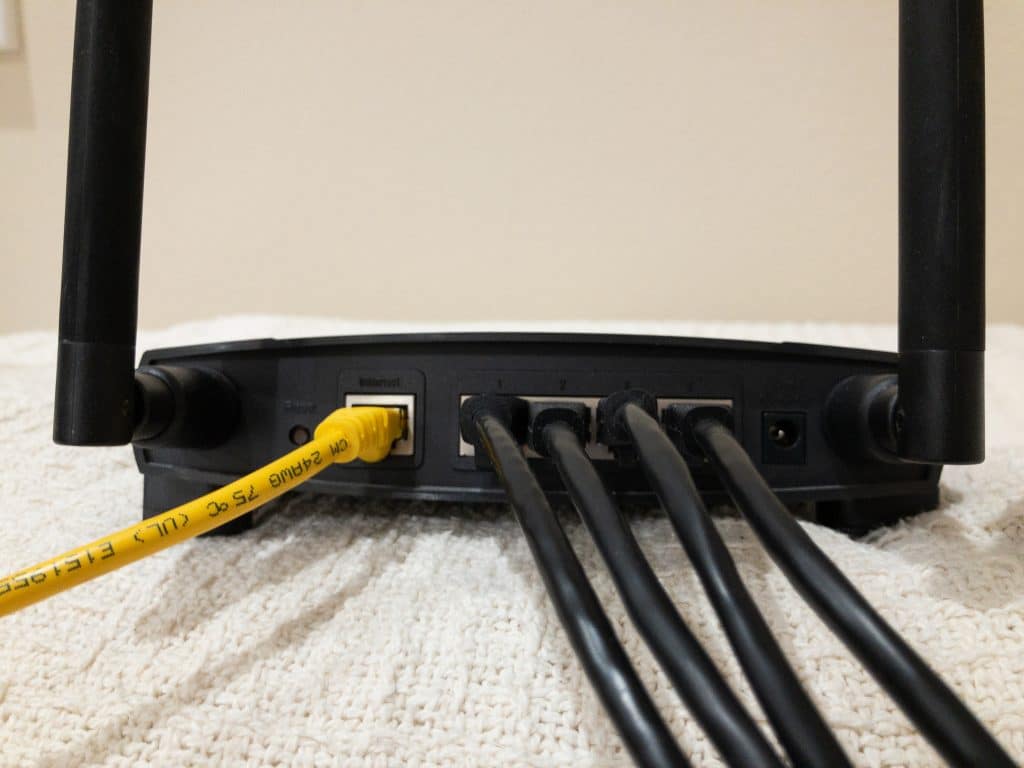
To Reach A Port We Must Set Sail
Ethernet ports don’t have much in common with ships. What FDR said about ships may be true, but for smart home gadgets, you just have to reach to the back of your network router.
Except when you run out of ports.
Ethernet ports and why you need them
Our home networks use both wired and wireless devices.
A few home networks might be completely wireless, but most likely yours has a mix of both Wi-Fi and wired Ethernet connections.
Wired Ethernet network connections have their own physical port that uses RJ-45 jacks and receptacles.
Each Ethernet port connects to a single device. If you have multiple devices that need to be connected, you will need to have multiple Ethernet ports.
You need one Ethernet port at each end of the connection. Devices that use Ethernet will have that port – so half the problem is solved.
But the situation at the networking equipment or central side of things, is a bit more complicated.
One, and two, and three…
At first network equipment like routers and Wi-Fi Access Points always had a single Ethernet connection.
You were required to buy a separate Ethernet switch to connect everything together.
Ethernet switches have multiple Ethernet ports and come in all shapes and sizes. The simplest, sometimes called dumb switches, are nothing more than signal repeaters.
Ethernet switches might have 2, 4, 8, 16, 24, or more ports and multiple switches can be connected together for more capacity.
You want fries with that?
The cost of networking equipment for home and offices has gotten really inexpensive.
As competition has increased, manufacturers have loaded up their gear with lots of extra features and capability.
Nowadays, home networking equipment is usually a single box that does lots of things – cable modem interface, wireless Wi-Fi controller, network firewall and security, network router, Ethernet switch, and more.
It is common to find 4 Ethernet ports on the back of most routers/Wi-Fi boxes supplied by your Internet provider or purchased on your own.
More is better, right?
But you may still find some equipment only has a single port and you’ll have to buy your own Ethernet switch to get more connections.
Competition is good
Fortunately, the cost of Ethernet switches for home use have come way down. You can find many to choose from for as low as $16 for a 5-port device or under $40 for 8-ports.
Keep in mind that one port is always needed to connect to your existing router or Ethernet switch, so a 4-port model will give you 3 more usable ports.
Five port models, or larger, are very popular. Using one port for the uplink, or existing connection, you get four or more available ports for all your additional devices.
Switches may also include power-over-Ethernet (PoE) ports for connecting IP Cameras, network controllers, and other devices without additional AC power cords.
Larger Ethernet switches also have options for fiber optic connections for much longer runs or inter-connecting with other networking equipment at even higher multi-gigabit speeds.

Don’t forget the cables
A solid network foundation is the key to having a reliable smart home. So pay attention to your choice of wires and wiring when using wired Ethernet cables.
There are many different types or grades of Ethernet cables. When shopping for wires, you can find them already made with connectors on both ends in a choice of lengths.
If you decide to make your own, pay attention to T568A versus T568B and the difference in wiring standards. Be consistent with whichever one you choose.
Why this matters
Many of us are using mesh Wi-Fi equipment to eliminate dead spots, increase wireless coverage, and maximize speed.
Most of the popular mesh Wi-Fi equipment assumes you aren’t using a lot of wired Ethernet devices.
You may find that many of them have only a single Ethernet port, some even have none! That’s definitely a step backwards.
Nonetheless, have no fear. You can easily add more ports to mesh Wi-Fi access points the same way by buying a separate Ethernet switch for as little as $10.
So here’s the thing – when shopping for mesh Wi-Fi (or really any router/Wi-Fi box), don’t worry too much if they don’t have multiple Ethernet ports.
You want to pay attention to the specs and features that matter and make a difference in how they operate, since now you know you can always add extra ports if you should need them.
